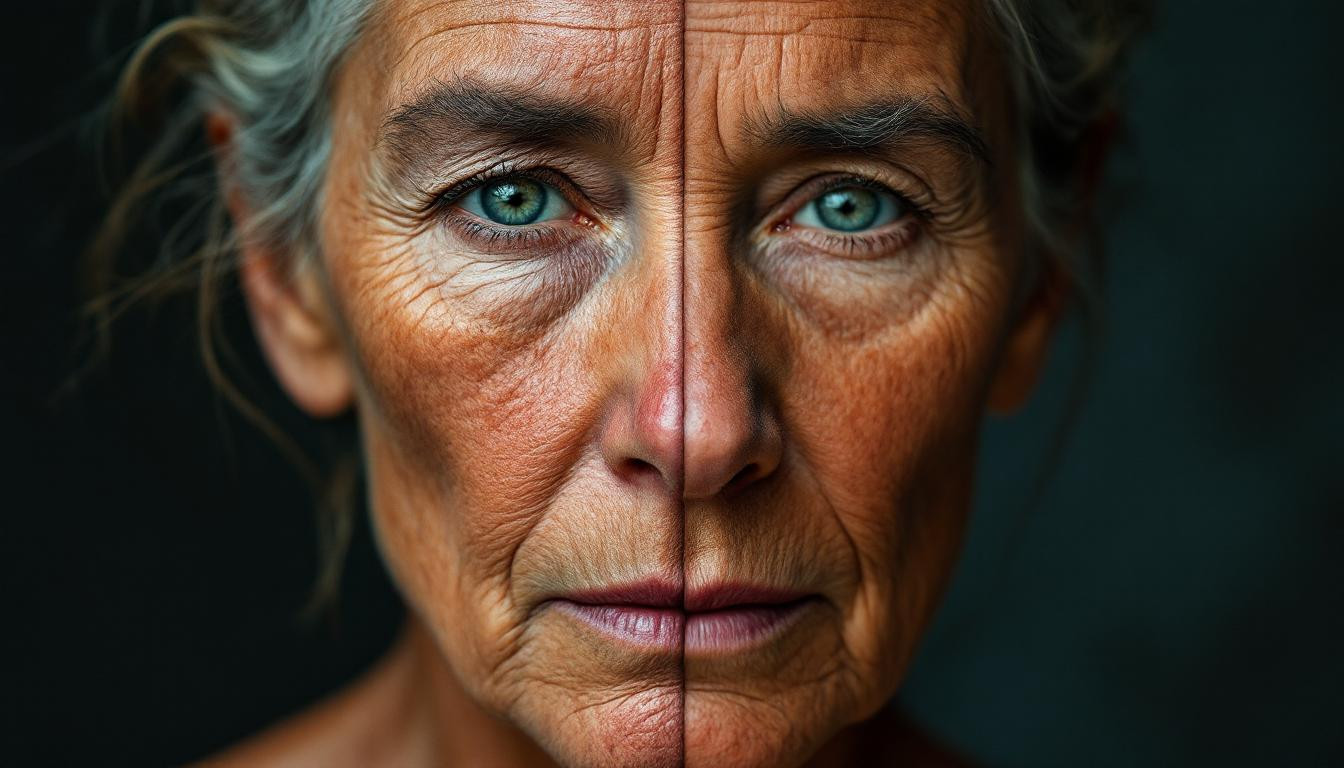Summer is almost here, and if you’re over 60, it’s time to rethink your sun protection strategy. As we age, our skin undergoes significant changes that require specialized care – especially when it comes to sunscreen. The approach that worked in your 40s or 50s simply won’t provide adequate protection for your mature skin after 60.
Why your skin changes dramatically after 60
After 60, your skin becomes thinner, drier, and less elastic due to decreased collagen production and natural oils. These changes make your skin barrier more fragile and vulnerable to UV damage, which can accelerate aging and increase health risks.
“Mature skin needs sunscreens that not only protect but also hydrate and repair, incorporating ingredients like ceramides and niacinamide to support skin barrier function,” explains Dr. Ellen Roberts, a board-certified dermatologist specializing in geriatric skincare.
The hidden dangers of using the wrong sunscreen
Using the wrong sunscreen after 60 isn’t just ineffective – it can actually harm your skin. Traditional sunscreens often lack the hydrating properties that mature skin desperately needs, especially during the spring and summer months when UV exposure peaks.
Think of your aging skin like a vintage piece of fine leather – without proper conditioning and protection, it becomes more susceptible to damage from environmental stressors. Regular sunscreens might protect against UV rays but fail to address the underlying fragility of mature skin.
Mineral vs. chemical: Why the difference matters after 60
“Mineral sunscreens with zinc oxide provide effective broad-spectrum protection without irritating fragile older skin,” notes Dr. James Patterson, a dermatological researcher at Northwestern University.
While chemical sunscreens absorb into the skin, mineral formulations create a physical barrier that reflects harmful rays. This distinction becomes crucial after 60, when skin sensitivity often increases and chemical formulas may cause irritation.
“The inclusion of DNA repair enzymes in sunscreens can help reverse some of the damage caused by years of sun exposure in mature skin,” says Dr. Patterson.
Key ingredients your mature skin needs this summer
Look for these essential components in your sunscreen after 60:
- Hyaluronic acid for deep hydration
- Ceramides to strengthen the skin barrier
- Niacinamide for inflammation reduction
- Antioxidants to combat environmental damage
I recently helped my 68-year-old mother switch to a mineral-based sunscreen with these ingredients, and within weeks, she noticed her skin felt tighter and more hydrated despite spending hours in her garden.
The SPF factor: Higher is better after 60
“High SPF sunscreens (SPF 50+) are particularly important for mature skin to reduce cumulative UV damage and associated aging,” emphasizes Dr. Roberts. This higher protection becomes essential as our skin’s natural defenses weaken with age.
Consider supplementing your sunscreen routine with dietary vitamin D3, which many women over 60 lack, for comprehensive sun protection that works from the inside out.
Application tips for maximum protection
For optimal protection, follow these guidelines:
- Apply sunscreen 15-20 minutes before sun exposure
- Reapply every two hours, especially after swimming
- Don’t forget often-missed spots like ears and neck
- Use about a teaspoon for your face alone
Many mature women find that avoiding excessive shininess in their sunscreen formula also helps them look younger, as ultra-dewy finishes can emphasize textural issues.
Adopting a holistic approach to sun protection
Sunscreen alone isn’t enough. Consider adopting a comprehensive morning skincare ritual that includes antioxidant serums before sunscreen application. Also, be mindful of wearing colors that complement mature skin while providing added protection.
Your skin has protected you for decades; now it’s time to give it the specialized care it deserves. By understanding the unique needs of your skin after 60 and choosing the right sunscreen, you’re not just preventing damage – you’re honoring the journey your skin has taken through life.
